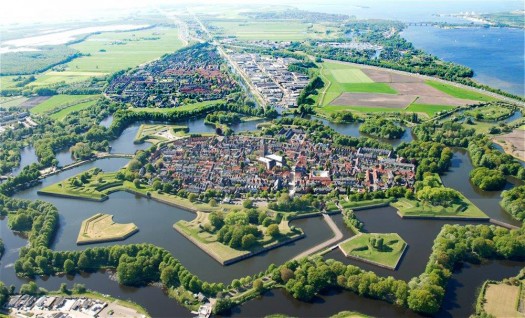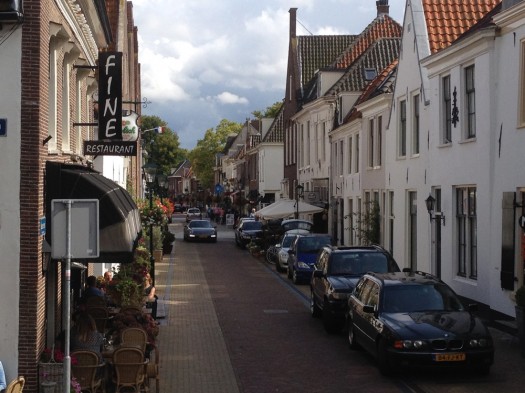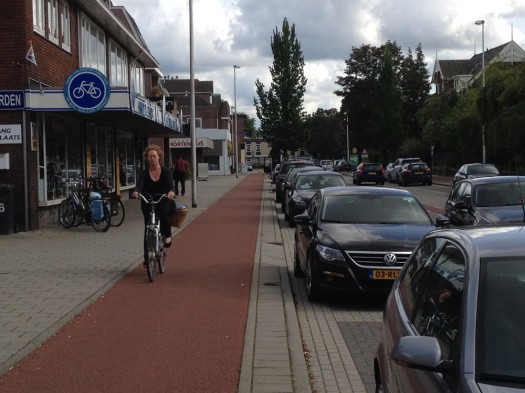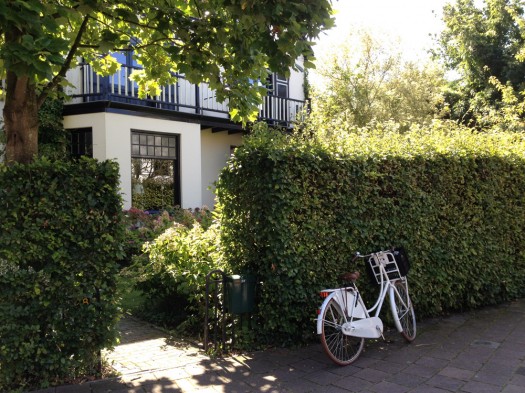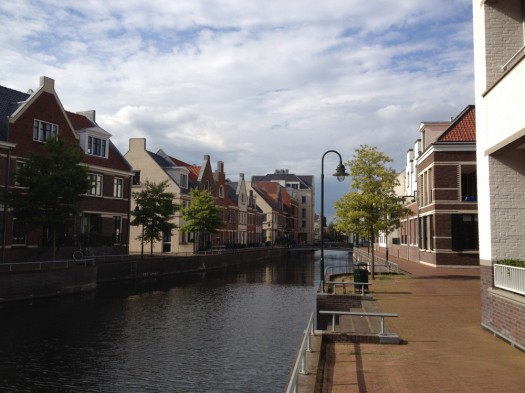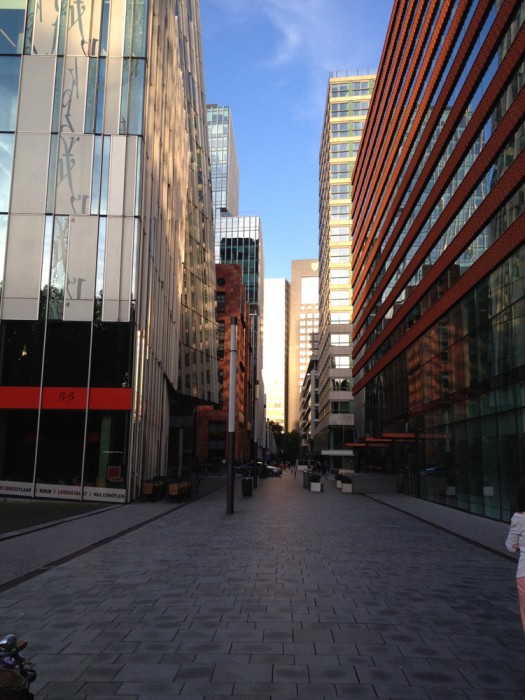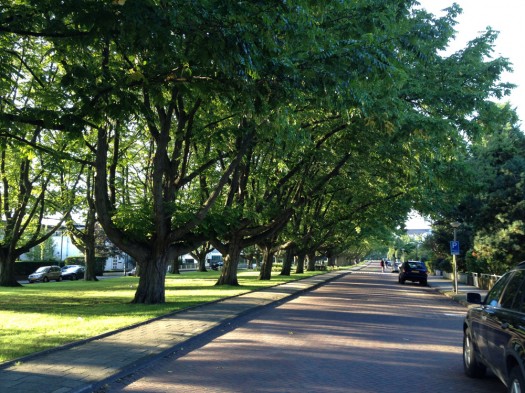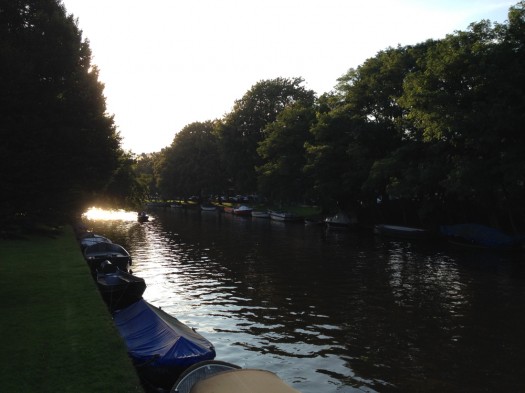A Placemaking Journal
Euro-Envy Reconsidered: Talkin’ time, distance and change
 When my wife and I headed to Europe for our first two-week vacation in 15 years, I don’t think I realized how grouchy I was getting about change adaptation in the US. So much political paralysis. So little leadership. No sense of urgency on issues of huge importance. It was way past time for a getaway to be among grown-ups.
When my wife and I headed to Europe for our first two-week vacation in 15 years, I don’t think I realized how grouchy I was getting about change adaptation in the US. So much political paralysis. So little leadership. No sense of urgency on issues of huge importance. It was way past time for a getaway to be among grown-ups.
For more than 30 years, my wife, Christine, and I have shared back-and-forth visits with Dutch friends. So their home in a village a half-hour train ride from Amsterdam was our headquarters for the two weeks. Together with the Dutch couple, we opted for just one side trip, a long weekend in Berlin. And we agreed on the rules for the experience we wanted in both countries:
No official tours. No check-off lists of must-see sites or must-attend events. Just a lot of time walking streets and squares interspersed with stops in cafes and bars as the notion struck us. We would “do” Europe by hanging out.
Of course, my experiences over the last decade working in community planning and development filtered my impressions. So as we strolled or settled somewhere with beers or coffee, I was quick to note contrasts between European walkable/bikeable/transit-enabled environments — especially in high-density Amsterdam — and the car-centric cities and towns of America.
Just look at this quick video I recorded at one Amsterdam intersection:
Europeans are used to hearing this kind of thing from envious Americans. The Dutch are usually too polite to call bullshit when we go on for too long about stuff we know less about than we suppose. But these are my friends. Which frees them to contradict my assumptions when they grow too broad. I got one course correction from my friends’ 22-year-old daughter, who was too jet-lagged from just arriving back home after six months of study in Latin America to patronize me.
Her response, when I went on about Europeans’ wisdom in prioritizing pedestrian, bike and transit over cars, roughly translated to: “Get a clue.”
The places you’re visiting, she reminded me, were working their way through human settlement and mobility successes and flops for a thousand or more years before automobiles entered the conversation. Amsterdam was already a mature, globally important city when America’s colonies of immigrants were struggling towards organizing themselves into an independent republic. Even the oldest American cities have spent at least a quarter of their histories planning for the care and feeding of cars.
“Don’t you think,” she asked, “it will take a few generations to reverse that?”
So time is a component we impatient Americans often fail to factor into our change equations. Here’s another one: Distance.
The hassle-free hop from Amsterdam to Berlin reminded me how geographically compacted are Europe’s countries. Consider: There are fewer miles separating Paris, Berlin, Amsterdam, Zurich, Brussels or Luxembourg in Europe than New York City and Atlanta in our country. Yet until recently, the Europeans’ proximity didn’t prevent thousands of years of violent conflicts. And even now, the transition into a true European Union is an uneasy one.
Is there any wonder that in our sprawled-out country, we can postpone indefinitely the we’re-all-in-this-together realization?
Here are some impressions that bubbled to the surface once I left myself open to them:
Given time, adaptations emerge. Take a look at this aerial of Naarden, the village east of Amsterdam where my Dutch friends live. You can see both its history from the early 14th century, when it was organized as a fortress to protect Amsterdam from the south, and its current appeal to Amsterdam commuters as a transit-served ‘burb with the old fortifications converted to parkland.
Here’s how the neighborhoods near the train station developed in the early decades of the 20th century.
And here’s how developers handled an updated “retrofit” for expanded family housing along Naarden’s main commercial corridor.
As enviable as Naarden’s transformation is, especially to outsiders, the locals reminded me how long it often takes to move projects through a multilayered bureaucracy and to accommodate NIMBY factions opposed to change. Adjoining Naarden is a village of similar vintage, Bussum, which, until the early 19th century, was part of Naarden. To a visitor, it’s impossible to tell when you’re leaving one municipality and entering another; and the two are talking merger to combine resources and to reduce some of the strain on small-town budgets. Yet, my friends tell me, negotiations have gone on longer than most imagined because outspoken folks worry about protecting what they consider to be the distinct characters of their communities.
Sound familiar?
In Amsterdam, where the central core of the city along its famous canals has been intensely developed for centuries, the pressure is on for affordable housing and commercial office space. So outlying areas, particularly ones to the south on rail and tram lines, are seeing the sort of redevelopment that feels like another version of suburban retrofit, with striking high-rise architecture not always perfectly engaging older suburban housing and canal and green space design.
Take a look at this video shot from a rooftop hotel terrace near Amsterdam’s Central Station. In the foreground, the oldest sections of the city. On the horizon, the high-rise office buildings and construction cranes beyond what was the city’s border until the late 19th century.
And here are some shots I took strolling around one very long block in the Zuidas business district that has risen around the Amsterdam Zuid (Amsterdam South) rail station that opened in the late 1970s.
Everywhere I looked on this trip, I saw and heard things that connected the efforts to respond to change in Europe with similar efforts in the US. Certain delusions in their history, not altogether different than some of the ones in ours, no doubt slowed crucial adaptations. But time sifted out some of the bad ideas. Maybe time will serve us in the same way.
Because of the viral velocity of ideas, both good and bad, in our time I’m not sure we can count on centuries of stumbling towards solutions. But since my brief time in Europe, I’m also less grumpy about the pace of change in ambitious planning efforts on this side of the Atlantic. I’m pretty sure, though, that I’ll need more frequent inoculations against pessimism.
I’m thinking Paris is what the doctor ordered.
If PlaceShakers is our soapbox, our Facebook page is where we step down, grab a drink and enjoy a little conversation. Looking for a heads-up on the latest community-building news and perspective from around the web? Click through and “Like” us and we’ll keep you in the loop.


